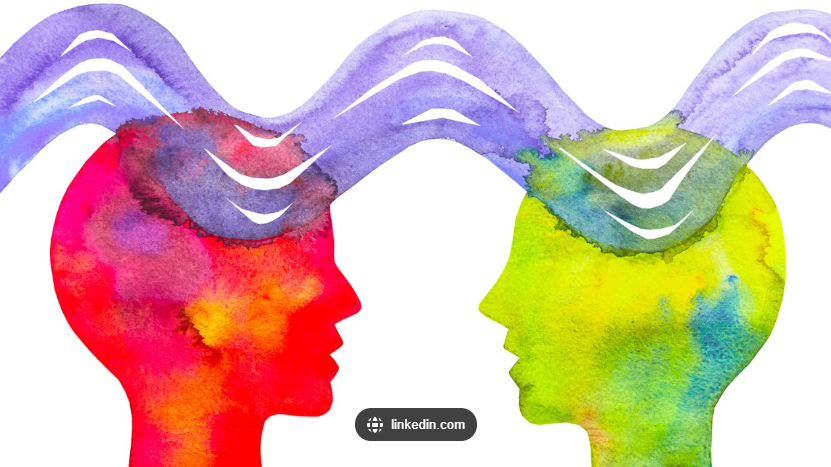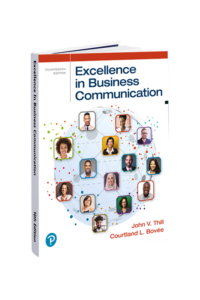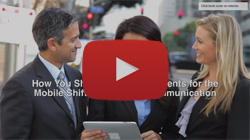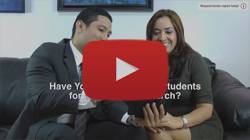
Effective communication is the lifeblood of any successful business. In today's fast-paced world, understanding how our brains process information is crucial for crafting compelling messages, influencing decisions, and fostering productive relationships. Neuroscience, the study of the brain and nervous system, offers valuable insights into how we can optimize communication strategies to achieve these goals.
Decoding Decision-Making: Leveraging Loss Aversion
At the core of every business decision lies the brain's intricate decision-making process. Neuroscience reveals that our brains often rely on shortcuts and heuristics, also known as "mental rules of thumb," to simplify complex choices. This can lead to biases, but understanding these mechanisms allows us to frame information in ways that resonate with our brains' decision-making centers.
One powerful strategy is leveraging loss aversion, the tendency for individuals to feel the pain of a loss more strongly than the pleasure of an equivalent gain. By framing a proposal in terms of what customers stand to lose if they don't choose your product or service, you can create a sense of urgency and increase the likelihood of a positive decision. For example, a marketing campaign could highlight the potential consequences of not updating to a new software version, rather than simply focusing on the benefits of the upgrade. This concept of loss aversion was first demonstrated by Kahneman and Tversky in their seminal work on prospect theory (Kahneman & Tversky, 1979).
Capturing Attention and Memory: Chunking and Visuals
The brain's capacity for attention is limited, making it challenging to convey information effectively in a world of constant distractions. Neuroscience-informed strategies can help us overcome this obstacle. Chunking information into smaller, manageable units, allows the brain to process it more readily, improving both attention and memory. For example, a complex presentation can be broken down into key points, each with its own supporting information, making it easier for the audience to follow and remember.
Visual aids, like diagrams, charts, and images, are particularly effective for engaging the brain and enhancing retention. Studies have shown that visual information is processed faster and remembered more easily than text alone. A sales pitch that utilizes visuals to illustrate key data points or product features will be more memorable and impactful than one solely reliant on words. The effectiveness of visual aids in communication is supported by research on the picture superiority effect, which shows that pictures are remembered better than words (Paivio & Csapo, 1973).
Harnessing the Power of Emotions: Crafting Messages that Connect
Emotions play a crucial role in how we perceive and process information. Research has shown that emotional responses often precede rational thought. By tapping into this connection, effective communicators can craft messages that evoke specific emotional states, enhancing engagement and receptivity.
For example, a company promoting a charitable cause might use visuals and storytelling to evoke feelings of empathy and inspire viewers to donate. Similarly, a sales presentation aimed at building excitement for a new product can use vivid language and imagery to create a sense of anticipation and desire. This approach aligns with the somatic marker hypothesis proposed by Damasio, which suggests that emotional processes guide behavior and decision-making (Damasio et al., 1996).
Mitigating Cognitive Biases: Recognizing and Counteracting Distortions
Cognitive biases, ingrained patterns of thinking, can significantly distort our perceptions and decisions. Understanding these biases allows communicators to develop strategies to mitigate their impact.
Confirmation bias, for example, leads us to favor information that confirms our existing beliefs. Presenting diverse viewpoints, even if they challenge our own, can help counter this bias and ensure that decisions are made based on a more complete understanding of the situation.
Anchoring effect refers to our tendency to rely heavily on the first piece of information we receive, even if it's irrelevant. Presenting data visually, with clear comparisons and trends, can help reduce the anchoring effect and promote a more objective analysis. The impact of cognitive biases on decision-making has been extensively studied by behavioral economists like Dan Ariely, who demonstrates how predictably irrational our choices can be (Ariely, 2008).
Building Trust and Credibility: Applying Neuroscience to Persuasion
Persuasion and influence are vital skills in the business world. Neuroscience offers valuable insights into the neural basis of trust and credibility, emphasizing the importance of factors like consistency, expertise, and social proof.
Communicating consistently, both verbally and nonverbally, builds a sense of reliability and trustworthiness. Sharing your expertise and demonstrating a genuine understanding of the audience's needs fosters credibility. Leveraging social proof, such as testimonials or endorsements from trusted sources, can also enhance the persuasiveness of your message. Research in social neuroscience has identified specific brain regions involved in trust and credibility assessment, such as the ventromedial prefrontal cortex (Krueger et al., 2007).
The Importance of Nonverbal Communication: Aligning Words with Actions
Nonverbal communication, encompassing facial expressions, gestures, and body language, often conveys more information than words alone. Neuroscience has revealed the intricate ways our brains process these signals, highlighting their impact on communication effectiveness.
Matching verbal and nonverbal cues creates a more coherent and impactful message. A confident handshake, a genuine smile, and open body language reinforce trust and engagement. Conversely, inconsistencies between verbal and nonverbal cues can create confusion and undermine credibility. Studies using functional magnetic resonance imaging (fMRI) have shown that nonverbal cues activate specific brain regions associated with emotion processing and social cognition (Frith & Frith, 2006).
Adapting to Diverse Cognitive Preferences: Tailoring Communication for Maximum Impact
Information processing varies significantly among individuals. Some are visual learners who prefer images and diagrams, while others are auditory learners who respond well to spoken words and music. Still, others are kinesthetic learners who learn best through hands-on experience and physical movement.
Understanding these differences allows communicators to adapt their style to cater to diverse cognitive preferences. For example, a training session might incorporate a mix of visual presentations, interactive exercises, and hands-on activities to cater to a range of learning styles, ensuring that the information resonates with a broader audience. It's worth noting that the concept of learning styles, while popular, has been challenged by some researchers who argue for a more evidence-based approach to educational practices (Pashler et al., 2008).
Managing Stress for Optimal Performance: Leveraging Neuroscience to Improve Communication Under Pressure
Stress can significantly impact our cognitive function and communication effectiveness. Neuroscience provides insights into managing stress responses, helping us optimize performance in high-pressure situations like presentations or negotiations.
Techniques like controlled breathing, mindfulness exercises, and reframing negative thoughts can help calm the nervous system and improve focus, clarity, and communication skills. By learning to manage stress effectively, we can ensure that our communication remains clear, confident, and persuasive, even in challenging environments. Techniques like mindfulness meditation have been shown to reduce activity in the amygdala, a brain region associated with stress and emotional reactivity (Hölzel et al., 2010).
Fostering Effective Team Dynamics: The Neuroscience of Collaboration
Teamwork is essential for success in today's business world. Neuroscience highlights the importance of fostering states conducive to collaboration, such as increasing oxytocin levels, the "bonding hormone," through trust-building exercises and activities that promote shared goals and a sense of community.
Enhancing empathy and social cognition within teams is crucial for effective communication and problem-solving. By developing the ability to understand and relate to others' perspectives, we can create a more supportive and collaborative environment where ideas can flow freely and challenges can be addressed effectively. Research on mirror neurons suggests that these specialized brain cells play a crucial role in empathy and social cognition, contributing to effective teamwork (Rizzolatti & Craighero, 2004).
Navigating the Digital Landscape: Understanding the Impact of Technology on Communication
The digital age has transformed how we communicate. Studies have shown that digital communication can affect our attention spans and information processing. By designing communication strategies that account for these effects, businesses can ensure that their messages remain effective in the digital realm.
For example, creating concise and visually appealing content, breaking down information into easily digestible chunks, and using interactive elements can help capture attention and engagement in a digital environment. Utilizing multimedia formats, such as videos or podcasts, can also provide a more stimulating and engaging experience, particularly for audiences with shorter attention spans. Studies on the effects of digital media on cognition have shown both positive and negative impacts, highlighting the need for balanced approaches to digital communication (Loh & Kanai, 2016).
Embracing Neuroscience for Enhanced Business Communication
The application of neuroscience to business communication offers a wealth of opportunities for improvement. By understanding the brain's mechanisms for decision-making, attention, emotion, and information processing, professionals can craft more effective messages, build stronger relationships, and drive better outcomes.
As research in this field continues to evolve, incorporating neuroscientific principles into communication strategies will become an essential component of organizational success.
From Theory to Practice: Implementing Neuroscience Through Excellence in Business Communication
Excellence in Business Communication is deeply rooted in the principles outlined by neuroscience research, as discussed above. By leveraging these insights, businesses can significantly enhance their communication strategies and overall effectiveness.
One key aspect of excellence in business communication is the ability to craft messages that resonate with the brain's decision-making processes. By understanding concepts like loss aversion, communicators can frame their proposals in ways that are more likely to elicit positive responses. For instance, a sales pitch that highlights the potential losses of not adopting a new technology may be more compelling than one that simply lists its benefits.
Another crucial element is the effective use of visual aids and information chunking. Excellence in business communication recognizes the brain's preference for visual information and its limited capacity for attention. Presentations that incorporate clear, relevant visuals and break down complex information into manageable chunks are more likely to be understood and remembered.
The role of emotions in communication is also central to excellence in this field. Skilled communicators understand the power of emotional connections and use storytelling and vivid imagery to create engaging, memorable messages. This approach aligns with neuroscientific findings on how emotions influence decision-making and information processing.
Moreover, excellence in business communication involves being aware of and mitigating cognitive biases. This might include presenting diverse viewpoints to counter confirmation bias or using data visualization to reduce the anchoring effect.
Adapting communication styles to suit diverse cognitive preferences and managing stress for optimal performance are also hallmarks of excellence in this area. By considering individual differences in information processing and implementing stress-management techniques, communicators can ensure their messages are received and understood by a wider audience.
In the digital age, excellence in business communication also means navigating the challenges and opportunities presented by technology. This involves creating content that captures attention in a digital environment while being mindful of the potential impacts on cognition and attention spans.
References
Ariely, D. (2008). Predictably Irrational: The Hidden Forces That Shape Our Decisions. New York: HarperCollins.
Damasio, A. R. (2005). Descartes' Error: Emotion, Reason, and the Human Brain. New York: Penguin Books.
Damasio, A. R., Everitt, B. J., & Bishop, D. (1996). The somatic marker hypothesis and the possible functions of the prefrontal cortex. Philosophical Transactions of the Royal Society of London. Series B: Biological Sciences, 351(1346), 1413-1420.
Frith, C. D., & Frith, U. (2006). The neural basis of mentalizing. Neuron, 50(4), 531-534.
Hölzel, B. K., Carmody, J., Evans, K. C., Hoge, E. A., Dusek, J. A., Morgan, L., … & Lazar, S. W. (2010). Stress reduction correlates with structural changes in the amygdala. Social Cognitive and Affective Neuroscience, 5(1), 11-17.
Kahneman, D. (2011). Thinking, Fast and Slow. New York: Farrar, Straus and Giroux.
Kahneman, D., & Tversky, A. (1979). Prospect theory: An analysis of decision under risk. Econometrica, 47(2), 263-291.
Krueger, F., McCabe, K., Moll, J., Kriegeskorte, N., Zahn, R., Strenziok, M., … & Grafman, J. (2007). Neural correlates of trust. Proceedings of the National Academy of Sciences, 104(50), 20084-20089.
Loh, K. K., & Kanai, R. (2016). How has the Internet reshaped human cognition? The Neuroscientist, 22(5), 506-520.
Paivio, A., & Csapo, K. (1973). Picture superiority in free recall: Imagery or dual coding? Cognitive Psychology, 5(2), 176-206.
Pashler, H., McDaniel, M., Rohrer, D., & Bjork, R. (2008). Learning styles: Concepts and evidence. Psychological Science in the Public Interest, 9(3), 105-119.
Rizzolatti, G., & Craighero, L. (2004). The mirror-neuron system. Annual Review of Neuroscience, 27, 169-192.
Read more














